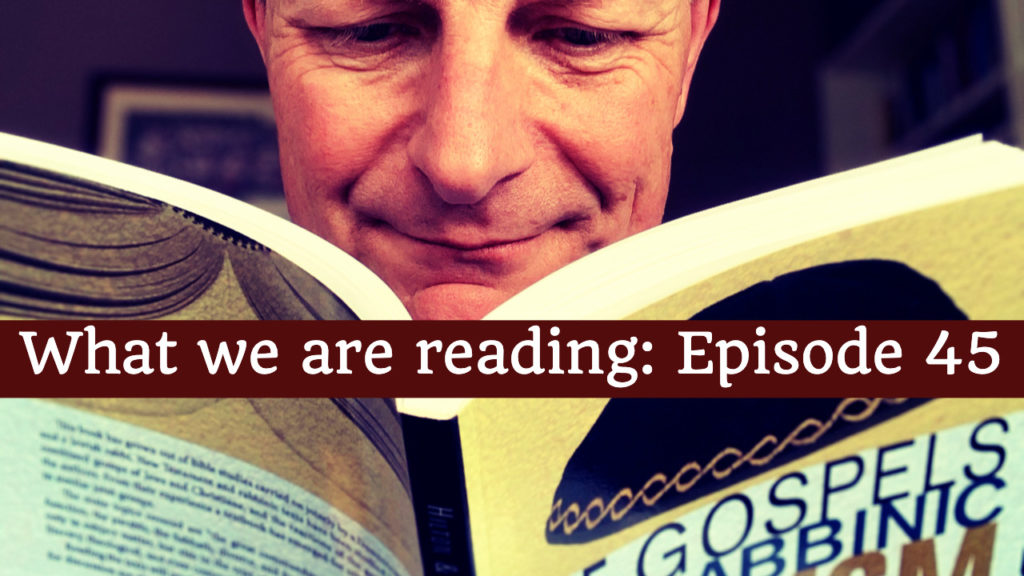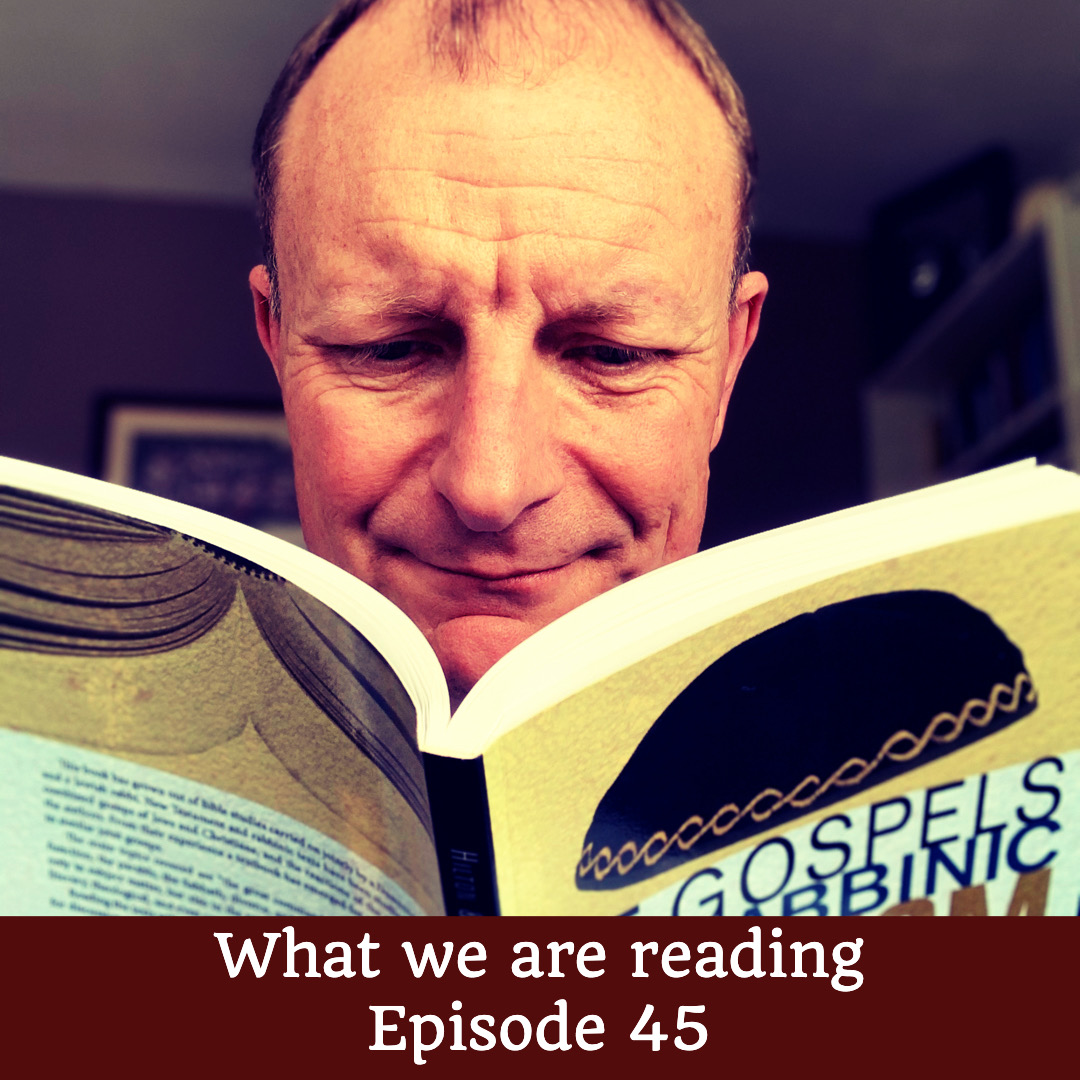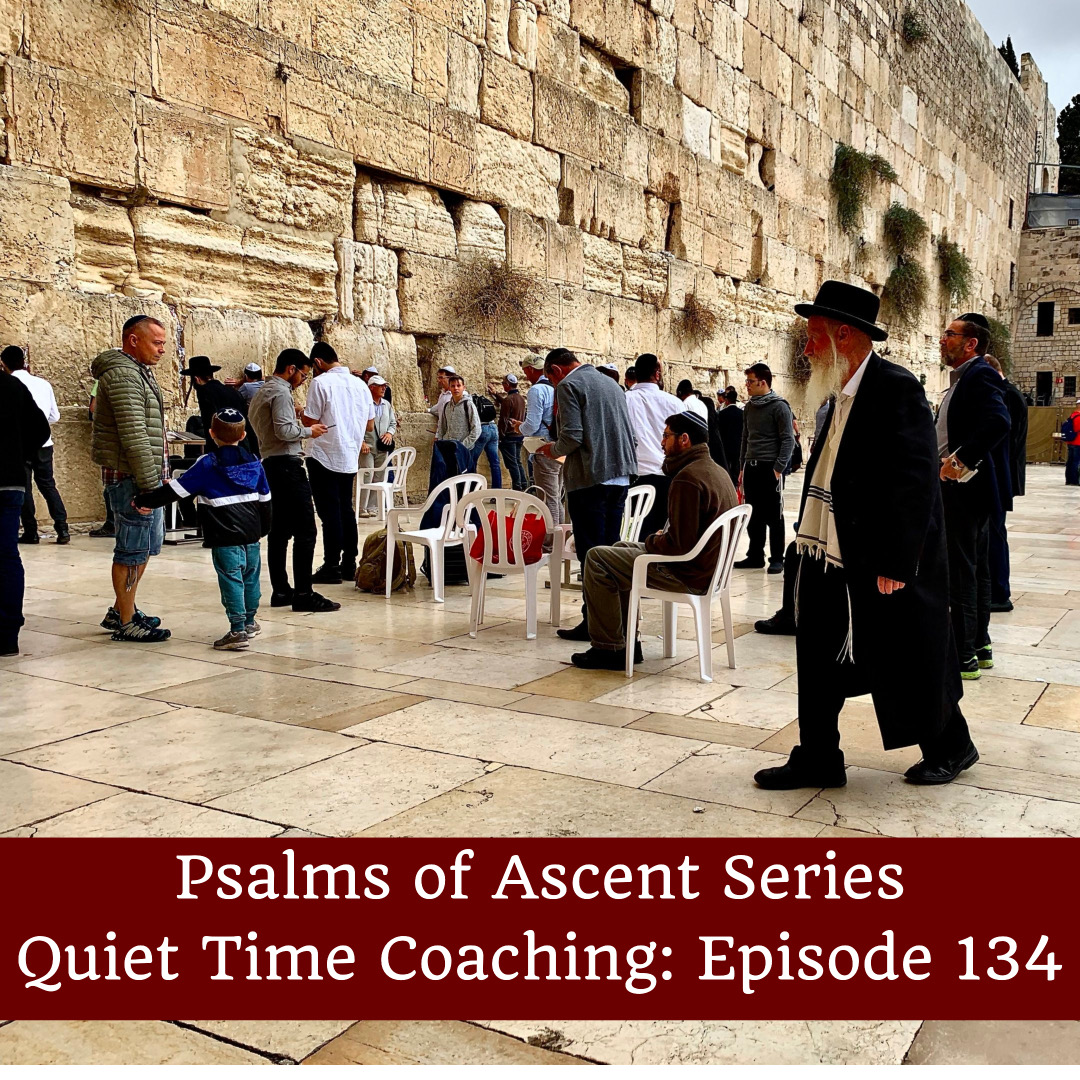What we are reading : Episode 45
A book by: Michael Hilton & Gordian Marshall
Date of publication: 1998
Publisher: WIPF and STOCK Publishers

This week I bring you some thoughts from a fascinating book on the gospel and rabbinic Judaism. I came across this book through my wife who knows the rabbi’s wife. In fact, we once had dinner with them many years ago.
My motivation in reading the book
- Since Christianity has its origins in Judaism, we stand to gain considerable insight by listening to the voices of people looking for the parallels and differences between the faiths.
- I hoped to understand the ways Jewish people think differently to Christians about Biblical texts. The “Jewishness” of Jesus is receiving a welcome emphasis in much of Christendom at the moment. For that to become meaningful, I felt the need to engage with Jewish texts, not just the concept of Jesus as a Jew.
Basic Premise
- Christians and Jews think they understand each other, but they do not. The assumptions of understanding prevent learning from one another. At best we miss the opportunity to deepen our faith, and at worst we find reasons for division, mistrust and even hate.
- I found it helpful that the presentation did not an attempt to prove the other side wrong, but to promote understanding. As they say, “We cannot advance the dialogue if we try to prove each other wrong. We are required to wipe away the pain of centuries and the assumptions of a past when one of the main reasons for reading each other’s text was to prove them wrong.” Page 36
- The stated goal is… “not syncretism, the mixture of traditions, but the knowledge of difference as a source for deepening our responses to God and each other….The study of the sources is an invitation to friendship. It is a way to deepen our comprehension of our respective traditions as partners in God’s Covenant.” (pages x-xi from the Preface)
- The point is less the details of the examination of the texts and topics (important as they are), but the thinking and approach to them.
Methodology
- This work brings together texts from early rabbinic writings and the Gospels. The writers (a Rabbi and a Dominican monk) explore together the common ground, the difference and the insights that accrue to each tradition.
- Jewish and Gospel texts are examined within their contexts, compared and shown how they shed light on one another.
- The book was written as a study guide for Jews and Christians to study together.
Ideas covered in the book
- The Great Commandment (Matthew 22.34-40; Deut 6.5; Lev 19.18; Matt 5.43-48; 19.16-30 – and a variety of Rabbinic sources)
- The Synagogue (Luke 4.16-30; Mk 6.1-6; Matt 13.54-58; Lev 25.8-17; Is 61.1-2a – and a variety of Rabbinic sources)
- The Parable and the Mashal (Lev 26.9; Matt 21.33-46; Ps 118.22-23; Matt 21.28-32; Psalm 23; Matt 20.1-16; Ecc 5.12; 12.13; Matt 25.1-13; Ecc 9.7-8; Matt 22.1-14; Lk 14.16-24; Matt 5.14-16; 6.22-23 – and a variety of Rabbinic sources)
- The Ox and the Pit (Matt 23.23; Ex 21.28-22.5; Matt 12.11-12; Lk 14.5; Matt 18.10-14; 5.18 – and a variety of Rabbinic sources)
- Shabbat (Ex 20.9-10; 35.2; John 7.22-23; Mk 2.27; Ex 21.14; 1 Sam 21.1-6; Matt 12.1-8; Mk 2.23-28; Lk 6.1-5; Matt 12.9-14; Mk 3.1-6; Lk 6.6-11; Lk 13.10-17; 14.1-6; Jn 5.1-18 – and a variety of Rabbinic sources)
- Divorce (Deut 24.1; Mal 2.16; Matt 1.18-20; 19.1-14; Mk 10.1-14; 1 Cor 7.26; Gen 38.24; Deut 25.5-10; Lk 18.15-17 – and a variety of Rabbinic sources)
- Who can Forgive? (Mal 3.17; Lk 19.8; Ex 34.7; Ex 32; Lev 16.30; Matt 12.31-32; Mk 3.28-30; Lk 12.10; Is 42.1; Ex 15.26; Matt 9.1-9; Jer 17.14; Ex 21.19; Ex 18.12; Matt 18.20; Jn 20.23 – and a variety of Rabbinic sources)
As you can see, each topic covers a great deal of Christian scripture and Jewish writings. Due to the quantity of material on each subject I will not dig into most of the chapters in detail here. I will instead focus on the chapter titled, “The Ox and the Pit” and the key concepts contained therein. I will not, of course, do it justice, but I hope the thoughts below will help to illustrate the nature of the book.
The Ox and the Pit
- The aims of the chapter are to introduce the reader to the study of Halachic texts, and to show how the concerns of such texts differ from those of the Gospels.
- They describe Halachic Midrash as: “A literature which uses scripture to provide proof texts for rules of behaviour. The ‘principles’ of Halachic Midrash are the rules by which scripture is to be interpreted.” From the glossary, 155
- The Gospels show Jesus concerned with correcting the over-focus of the Pharisees on detailed application of biblical injunctions: “Woe to you, teachers of the law and Pharisees, you hypocrites! You give a tenth of your spices—mint, dill and cumin. But you have neglected the more important matters of the law—justice, mercy and faithfulness.” (Matthew 23:23 NIV11)
- A Pharisee of the day would likely argue that giving their tithes meticulously was the way to live out the more important matters of the law – justice, mercy and faithfulness.
- The authors illustrate this way of thinking by commenting on the connections between Exodus 21:28-22:5, teachings in the Mishnah (Baba Kamma 1.1; 5.5; 5.6; 6.1), and Matthew 12:11-12 / Luke 14:5.
- I will not go into the scriptures in detail here, but the Exodus passages concerns what happens if an ox or ass gores someone, if they fall into a pit, if one’s beast gets loose and eats another’s crops, or a fire consumes the produce of someone else’s farm. The Exodus texts make it clear that the one who owns the animal, the pit, or was responsible for the fire breaking out is the one who should make recompense. “Notice how different this text is from Parliamentary legislation today. Modern laws set out the rules: ancient law codes set out examples. Our text gives a series of cases of accidents which could happen: from this, one is expected to deduce the general principles, which could then be applied to other cases not specifically mentioned.” 82-83
- Amongst other issues, the Mishnah attempts to answer the question as to what kind of pit are we talking about? “Does it mean a hole anywhere, even on your own property?” 86 And how deep does it have to be to be defined as a pit? Similarly, what happens if the pit belongs to two people? In what circumstances are they both liable, and in what circumstances is one of them liable rather than the other?
- We might think such discussion misses the point, but they deal with very real life circumstances, and the authors of the Mishnah wanted to discern how scripture could answer practical issues.
- When we recognise the aims of the Mishnah, perhaps we can be more forgiving if it is misapplied. The problem may not be so much in the rabbinic thinking, as in the personal practice. If Judaism had or has a problem with this, it is not alone. Plenty of people of the Christian faith struggle with the same challenge.
- Perhaps I could paraphrase Jesus regarding tithing (Matthew 23.23) and ox-rescuing on the sabbath (Luke 14.5). The locus of his accusations against the Pharisees was not so much that they had codified specific aspects of implementing the Exodus examples, but in allowing them to become their spiritual focus to the extent of neglecting weightier matters.
- How does this help? It gives me a clearer picture of the difference in emphasis of the Gospels compared to the Mishnah. “What kind of text, then, is a Gospel? To put it simply, whereas Mishnah deals mainly with halakhah, the gospels are virtually all aggadah, which teaches a moral direction, not specific rules.” 92 (The authors define halakhah as “The law or the rules of behaviour on a particular subject, as agreed by the rabbis. From this word is derived an English adjective, halachic.” From the glossary)
Some of my take-aways
- Understanding more clearly the rabbinic nature of Jesus and his teaching
- Grasping more clearly ways in which early Christianity influenced post-temple Judaism
- Gaining insight into why Jewish leaders and Jesus interpreted scripture differently
Caveats
- This is not a book for the casual reader. You will need to concentrate and take the time to think about what is being expressed.
- It is also not a book for someone easily annoyed by non-traditional views. The Catholic and Jewish perspectives do not always fit with what might be termed an broadly ‘evangelical’ approach to faith and scripture.
I recommend this book for anybody looking for a better understanding of Jewish scriptural interpretation, and the similarities and differences with Christian interpretation.
Please add your comments on this week’s topic. We learn best when we learn in community.
Do you have a question about teaching the Bible? Is it theological, technical, practical? Send me your questions or suggestions. Here’s the email: malcolm@malcolmcox.org.
If you’d like a copy of my free eBook on spiritual disciplines, “How God grows His people”, sign up at my website: http://www.malcolmcox.org.
Please pass the link on, subscribe, leave a review.
“Worship the LORD with gladness; come before him with joyful songs.” (Psalms 100:2 NIV11)
God bless, Malcolm
PS: You might also be interested in my book: “An elephant’s swimming pool”, a devotional look at the Gospel of John


